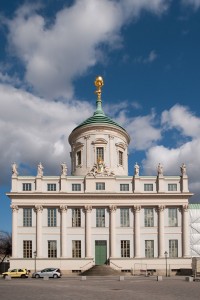Alembik (Destillierhelm) aus hellgrünem, ofengeformtem Glas mit angesetzter Tülle, Abriss unbehandelt. Formgleiche Typen fanden bereits im 13. Jahrhundert Anwendung. Mit einem derartigen Alembik fing man den bei einer Destillation, etwa dem Erhitzen von Maische zur Herstellung von Alkohol, nach oben steigenden Dampf auf aus einem Kolben auf, der dann durch die nach unten führende Tülle abkühlte und in flüssiger Form in ein bereitgestelltes Gefäß geführt wurde. Dieses Destillat diente als Grundlage für Spirituosen, etwa Branntwein oder Obstbrand. In den Laboratorien von Apotheken wurden Alembiks zur Herstellung von flüssigen Arzneimitteln genutzt (vgl. Ausst.-Kat. Gläserne Welten 2017, Kat. 10e; Schaich, Reine Formsache, 2007, Kat. 225; Friese, Glashütten in Brandenburg, 1992, Taf. 13; Hein/Müller-Jahncke, Kostbarkeiten aus dem Deutschen Apothekenmuseum Heidelberg, 1993, S. 110–113). Der Alembik wurde 1953 erstmalig inventarisiert. [Verena Wasmuth]
en

